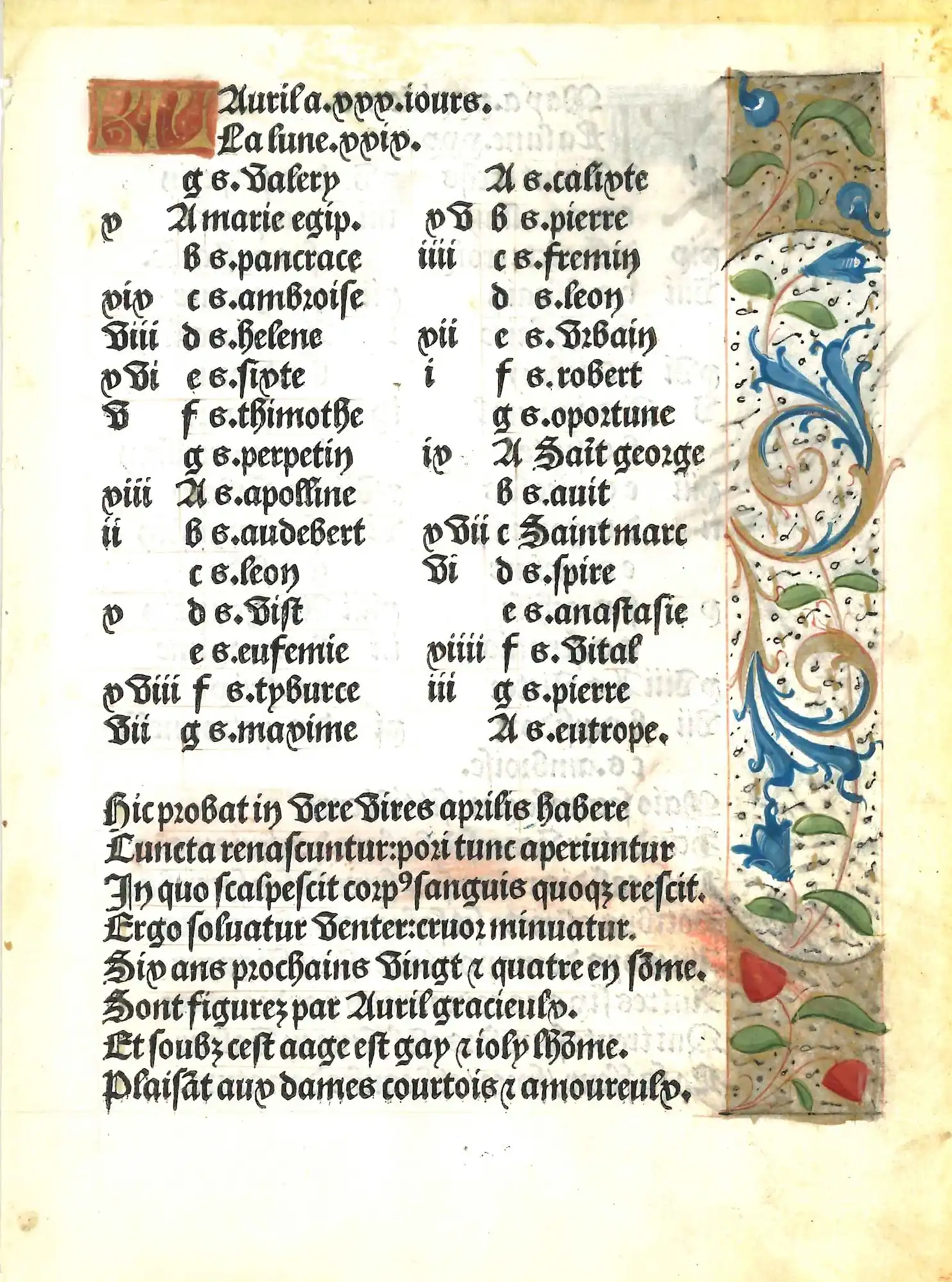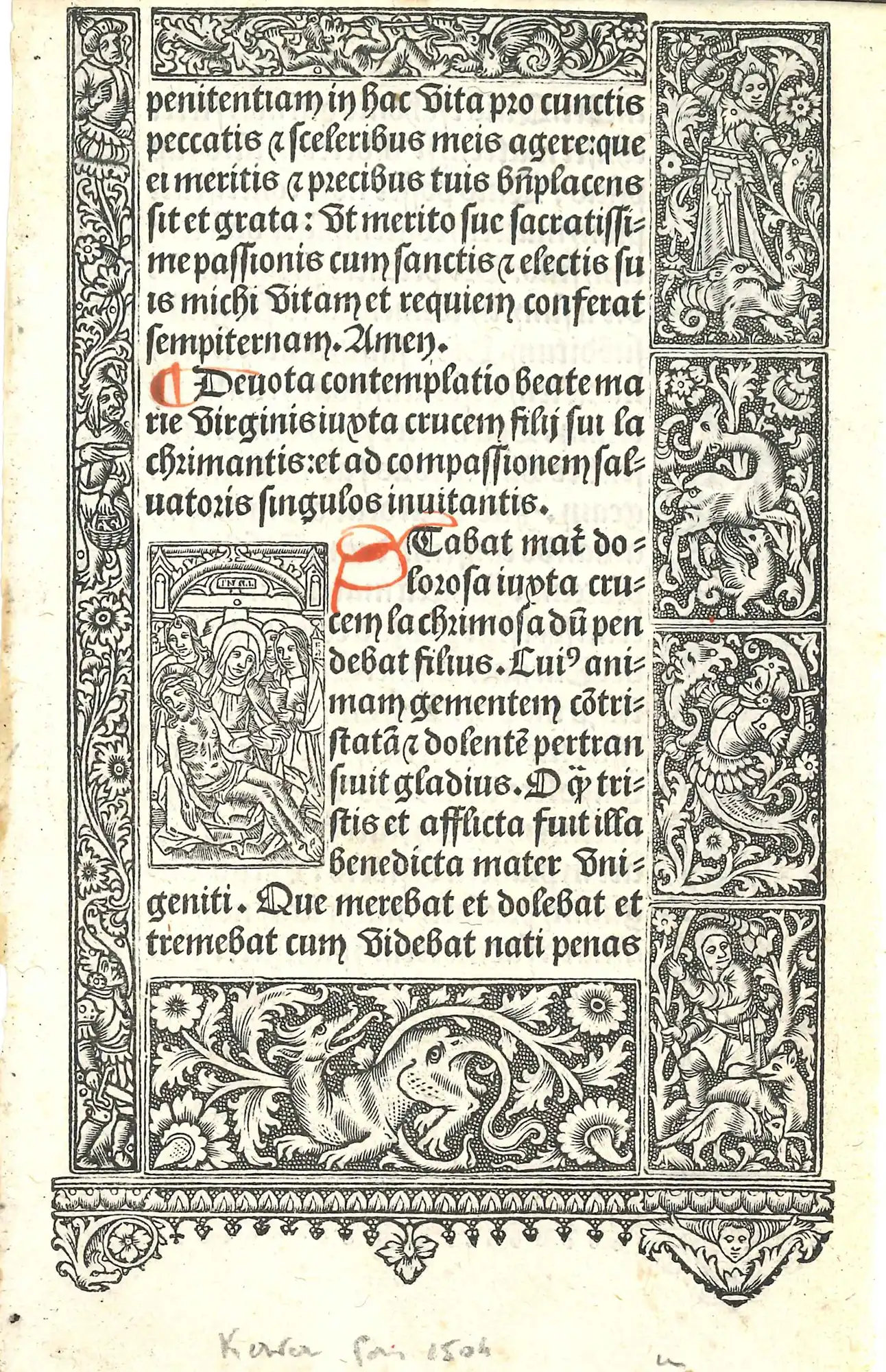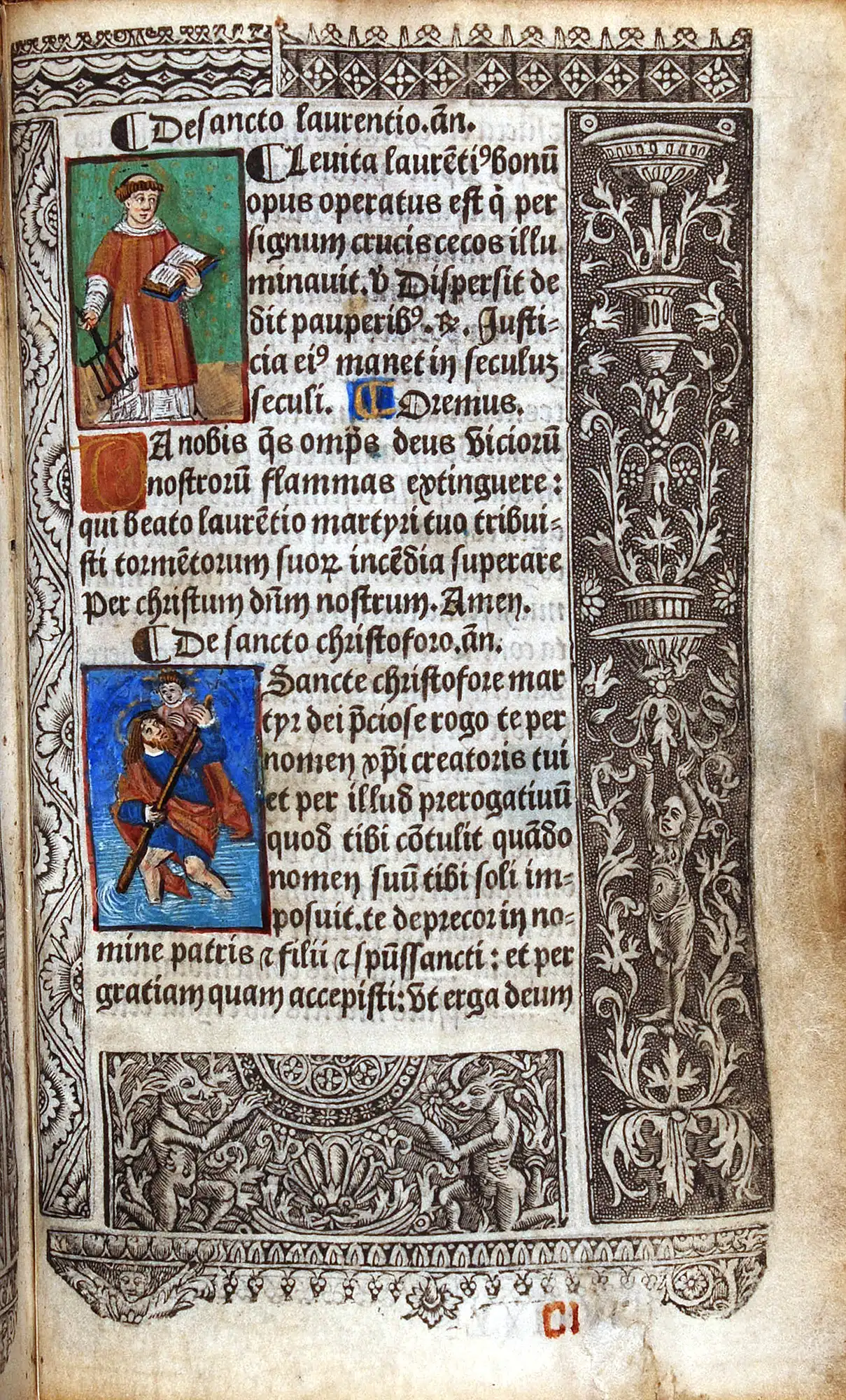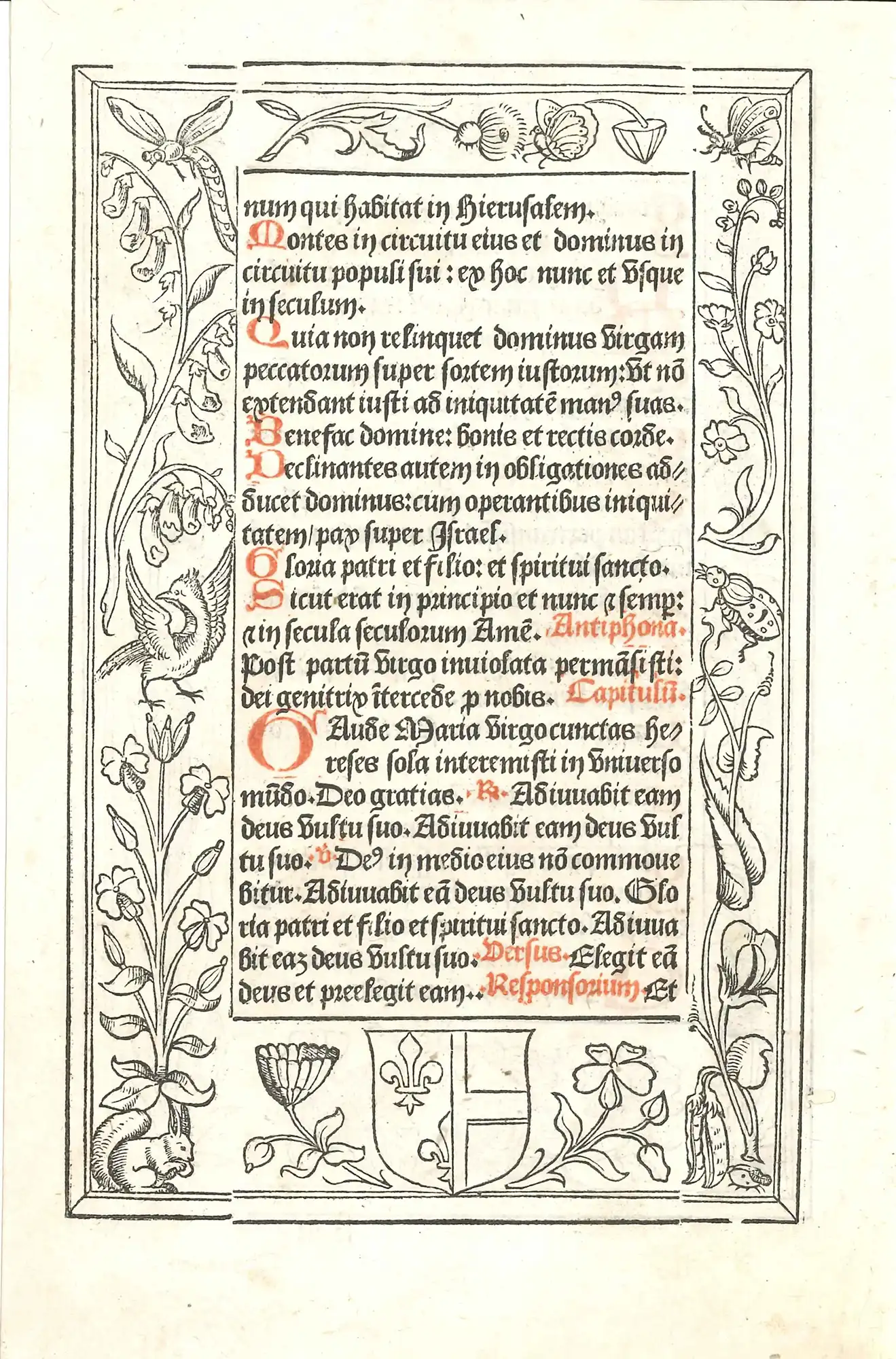Case 11
- France

Horae ad usum Romanum. Latin. Paris: Thielman Kerver, 1500. Single leaf. Part of Calendar (April-June).
Horae, or Books of Hours as they are commonly called, were popular prayer books for use by laity in the home. These books typically include calendars with saints’ and feast days, an excerpt from the Gospels, the Office of the Blessed Virgin Mary, the fifteen Psalms of Degrees, the seven Penitential Psalms, a Litany of Saints, an Office of the Dead, the Hours of the Cross, and any number of personal prayers. Printed Books of Hours derive from the manuscript tradition, and many fine examples from the Middle Ages and Renaissance survive today.

Horae ad usum Romanum. Latin. Paris: Thielman Kerver, 1500. Single leaf. Part of Calendar (April-June).
Open image in new window

Hore virginis Marie secundum verum usum Romanum. Latin. Paris: Thielman Kerver, 1504. Single leaf.
The printed book in France was from the very beginning a highly centralised trade which produced books of elegant character. Besides Paris, Lyon was the most significant early centre of printing and publishing.
Thielman Kerver (fl. 1497–1522) was one of the most famous Parisian printers and the last partner to take over the original press founded by Ulrich Gering. He was, like many of his contemporaries, a publisher as well as a printer. The earliest appearances of Kerver’s name are in Books of Hours printed for him in 1497. Kerver also worked in partnership with Georg Wolf between November 1498 and June 1499. The pair ran an active business with finely printed and well-illustrated Books of Hours being their most notable efforts. Kerver continued to print well into the sixteenth century.

Hore virginis Marie secundum verum usum Romanum. Latin. Paris: Thielman Kerver, 1504. Single leaf.
Open image in new window

Book of Hours. Latin. Paris: Printed by Jehan de la Roche, for Nicolas Vivien, 1514.
The earliest printed liturgical work held in the Reed Collection is this 1514 French Book of Hours. Printed on vellum, it is illustrated with historiated woodcut borders and decorated with hand-coloured printed 7-line miniatures. The book is open at the Suffrages of the Saints and the miniatures depict Saints Laurence, Stephen, and Christopher.

Book of Hours. Latin. Paris: Geofroy Tory, 1527. Single leaf.
Geofroy Tory (ca. 1480-1533) was an influential Paris-based printer who wrote the first theoretical treatise on the designing of types, Champ-fleury, in 1529, which earnt him the title of printer to the king of France, François I.
Tory advocated the use of the accent, apostrophe, and cedilla in French printing, and was also a poet and an able translator from Greek. Tory was instrumental in marking the shift from gothic to roman type in French printing.



